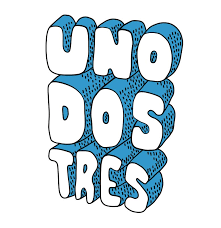 While walking on the beaches of Oceanside, California a couple of weeks ago, my family and I ventured onto the pier to take in the sights and sounds along that boardwalk.
While walking on the beaches of Oceanside, California a couple of weeks ago, my family and I ventured onto the pier to take in the sights and sounds along that boardwalk.
As we did, we came upon a family as it prepared to take a picture. A familiar scene, the father was readying himself while providing direction to the group in Spanish, as mom and their four kids lined up along the handrail for what would be a great memory. Of course, the picture wouldn’t include dad, so I offered to take the picture so that he could be included.
He immediately began to respond in Spanish and thanked me as he handed me his phone and stepped over to his excited family. Seeing his clear appreciation, I simply smiled and nodded in agreement as he took his place alongside one of the older children. As I held up the camera, I prepared them by counting aloud, “one…two…three.” and took a couple of shots.
The family was very thankful, and I shook hands with dad and moved on with my own family. As we resumed our walk, my nine-year-old daughter, Samantha, took my hand and said, “Daddy, you should have used your Spanish.” I explained to Samantha that I was afraid what little Spanish I know might have led to me not understanding much more their father might converse with me; in short, explaining I felt unprepared to have a better connection with the family.
Then Samantha told me, “Really? ‘Uno, dos, tres…’ It’s not hard!” Thus, I learned a valuable lesson about the assumptions in communications: The fear of miscommunication can prevent us from accomplishing more of our desired goals.
In professional settings, I believe we often are challenged and likely even fall prey to these same fears of not communicating effectively. We likely do it for various reasons, such as being too sensitive to artificial barriers that include intra/inter-divisional concerns, being too many levels above or below our communication destination, or believing that we don’t have the technical or cultural knowledge or understanding that qualifies us to provide input. In other words, we fear we don’t ‘speak their language’.
The real effect, of course, isn’t that we don’t communicate the issue of the moment but that we so easily allow an opportunity to maintain a communication stream with that area or person within our organization. And as we deliberately accept and justify that decision, we add yet another obstacle that could make a future need to communicate more difficult.
The alternative to this self-fulfilling cycle is to employ the commitment of communications to our organizations based upon principle rather than preference; to focus upon the message and the value of the information rather than whether we are the right or best person to do so. True, in many instances, strategic communications are an essential function of managing information and expectations. But, for the far more frequent and team-building form of interaction and information-sharing processes that occur on a daily—make that hourly—basis, we owe it to our colleagues to show them that we care more about their successes by providing them perspectives, ideas, feedback and suggestions that can aid in rising to those new levels of achievement. As leaders, we demonstrate the infinitely greater value of collaboration in a free-form, rather than a formal process than often dilutes the energy and immediacy that real-time discoveries can infuse into a team.
And by openly practicing the art of leading in all directions, we in turn create successive leadership models throughout our groups, who in turn are given and give power to encourage and support and partner in ways managers simply cannot envision by themselves. Members in the organization develop and mentor one another in a way that clearly focuses upon accomplishing the goals while also accomplishing personal growth.
While it is quite clear that leaders thrive in environments of ambiguity, it is because they see those as opportunities to provide clarity, and there is no greater way to focus a team’s energies and talents towards a goal than by directly communicating the goal and strategies they can all contribute to.
Leadership, then, really is all about communication. And it’s as easy as uno, dos, tres.



